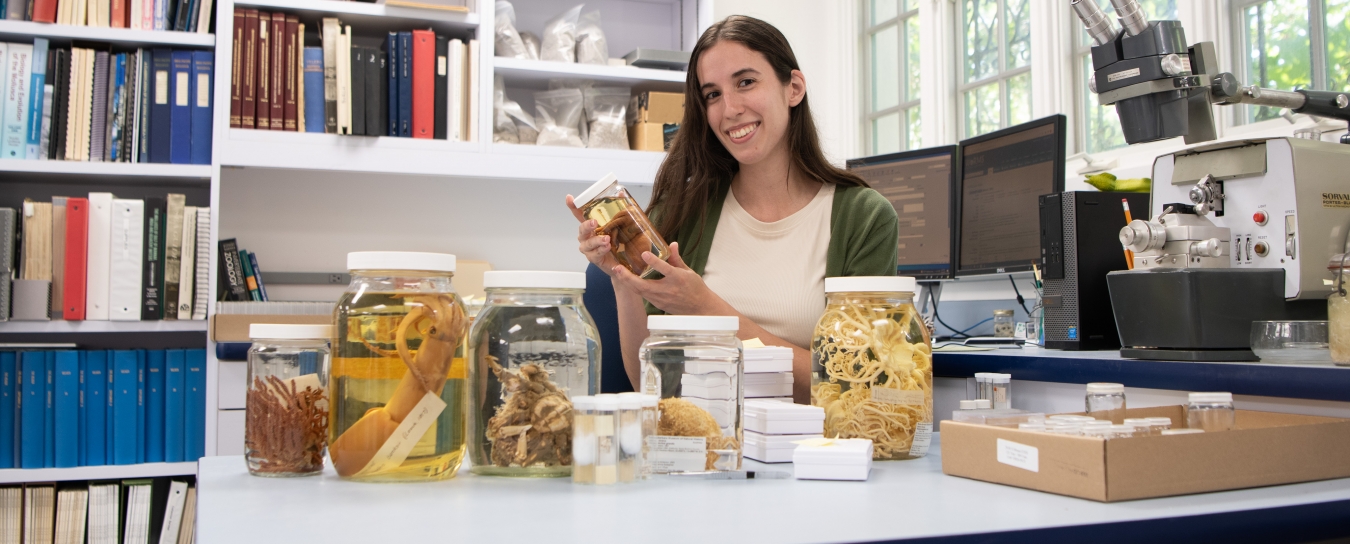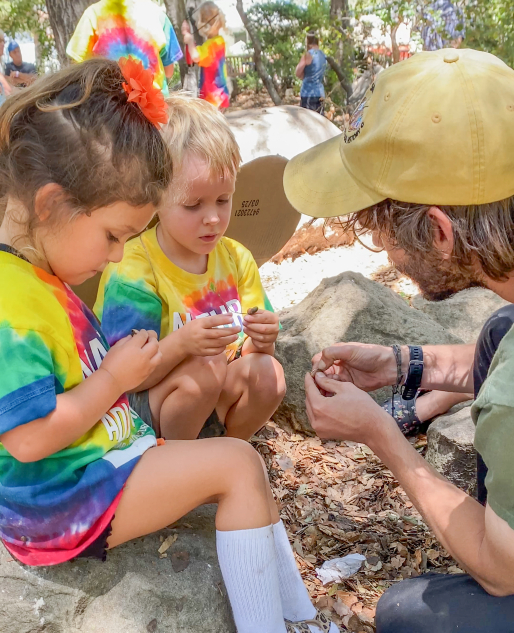
General
Browse our answers to questions about the practice of science. We’re sharing expertise in what museums are for, paths to museum careers, systematics, phylogenetics, nomenclature, microscopy, photography, and more.
- Anthropology
- Rocks & Fossils
- Invertebrates
- Vertebrates
- Botany
- Astronomy
- Fungi
- General
- Recently Asked
Who gets to name an unknown species?
If someone finds an insect that is a one of a kind and compeltely unknown to science, who gets to name such a find?
Curator Response
Hi Ken,
The name is given by the person who recognizes that it is new. Just finding a new species doesn’t bring automatic glory, though! You have to describe it, which is the term we use for establishing its newness in the scientific literature.
In theory, anyone who is competent and has the time and motivation is the one who ends up describing—and therefore naming—the species. There are no “designated” experts that have to describe new species—there’s no “new species license,” no official certification, and you don’t have to be a member of a special club. You have to be willing to put in the effort to determine the species really is new, and create a publication that meets the requirements set out by the International Code of Zoological Nomenclature (ICZN).
It is generally a huge amount of work to (properly) describe a new species. Determining that the species is actually undescribed can be an enormous amount of effort, requiring checking and dissecting type specimens in a dozen different museums, for example. Then there are all the steps in writing a satisfactory description of the critter, taking diagnostic images of it or doing drawings, making maps, listing label data for all the material, databasing, taking measurements and even running statistics, then writing the actual manuscript that frames it up and refers to all the relevant prior literature, etc. All of this takes huge effort, in which bestowing the name is just a tiny part. Not everyone does this well every time, and sometimes just the bare minimum of ICZN requirements are met, so that the name stands, but it’s unclear what the identity of the critter is. The benefit to all this hassle is that when the system functions well, it’s extremely rigorous, allowing scientists all over the world to use standardized names to communicate about species across languages.
Choosing the name is definitely part of the fun of describing species. We have almost complete freedom of doing so, but some ICZN rules have to be followed. The name has to sound somewhat Latin, and cannot be an insult. But we are free to decide whether we want it to be descriptive (with few dots = oligopunctatus), refer to a location (= santabarbarensis), honor a person (smithi, smithae), or anything else that we may consider appropriate. Dr. Geiger has named species after an artist (Mark Tobey: Anatoma tobeyoides), after a punk band (The Ex: Depressizona exorum), after a sea monster (Scissurella xandaros), for a host association in a commensal pea crab (Orthotheres haliotidis, Haliotis = abalone), for my most significant other (Trogloconcha christinae), and a computer (Scissurella alto), to just name a few.
Although you need to follow the ICZN rules, the name itself does not need to be approved by any sort of committee. The paper describing and establishing the species as new needs to pass peer review, and if the scientific community at large decides you provided sufficient evidence that the species is really new, the name you created will get used.
Stay curious,
Schlinger Chair and Curator of Entomology Matthew L. Gimmel, Ph.D. and Curator of Malacology Daniel L. Geiger. Ph.D.
Ken response:
Thanks for the reply. As of now no one can even say what species or genus this specimen belongs to so it's going to be extremely difficult if not impossible for someone who is not a scientist to get anywhere with this specimen.
Curator response:
Yup, it can be tough. If a species is rare, to identify a specimen—whether the species is undescribed or not—often takes a journey between experts to find someone who knows the specific group very well. Non-experts/amateurs are free to dive into the fray, do the literature survey, visit museums to become familiar with many species, etc. There are a number of excellent amateurs making contributions to taxonomy (the study of species and their relationships in the family tree of life). But it takes significant time (years to decades) to develop that sort of expertise. Only a few are willing to do it, very few find the time, and even fewer show the tenacity of following through.
Sometimes an expert is at hand, but the evidence is lacking. When a specimen is partial or poorly preserved, there isn’t always sufficient evidence of the indicators that tell experts what species they’re looking at, or whether it is something new. This is part of why museums work so hard to preserve specimens in the best possible condition, and with as much data about their origin as possible. Many species new to science have been discovered in drawers (rather than in the field) by experts consulting museum collections. Curators with more general knowledge—or expertise in other areas—have preserved them for future uses, knowing experts can visit and add more information and scientific value.
We as experts only know a handful of groups at the deep level required to do things like describe new species with confidence. For Dr. Geiger, it’s abalone (65 species, 200 names) and the little slit shells (160 species, 400 names), on which he has written monographs. For the rest of the mollusks, he can tell to which group they belong, but that's about it. When curating, he consults the literature and uses published information to categorize specimens as well as he can, awaiting the day when an expert comes to tell us more and enrich our knowledge.
There are too few experts to cover all of the living organisms. That is just reality. Even for researchers, the day has 24 hours, and we focus on certain groups, and ignore others. That is part of academic freedom. It’s also why the world needs more taxonomists, just to understand life on Earth.


